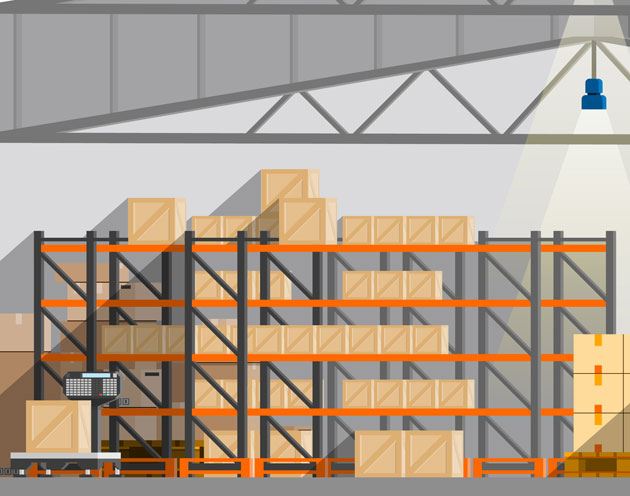Inventory optimization and flexible supply chain

Inventory optimization and flexible supply chain
The retailer needs to quickly respond to changing demand and, moreover, to fine-tune the supply chain in order to meet the needs of customers in a timely manner. Let's talk about how inventory optimization can free up funds and reduce operating costs, as well as how to avoid surprises with full visibility of inventory.
What's new in inventory planning and optimization?
Retailers today are overly focused on preparing for sudden changes in demand and consumer behavior. Retailers are concerned about the opportunity and the willingness to respond to it. The 2020 pandemic has taught one and the most important lesson - traditional methods of demand forecasting and inventory planning are no longer enough.
The key to solving the problem is to build a system that will allow retailers to respond to large-scale disruptions in the supply chain, track how they occur and predict their consequences, as well as ensure the sustainable development of such a system. For this, it is necessary to ensure full control over the movement of warehouse stocks.

A retailer should always be aware of whether its business is capable of responding quickly enough when it is required on a daily basis or even during the day, and to make accurate predictions to meet the changing needs of customers.

Focus on inventory control has become a priority lately
More than 76% of retailers cited real-time inventory visibility as a key area for improving their supply chain. These figures come from a study (subscription required) conducted by RSR (Retail Systems Researc) with the support of Symphony RetailAI among retailers in December 2019.
In addition, over 70% of retailers indicated that the ability to respond quickly to market changes is an important factor in their supply chain optimization strategy. With the advent of the coronavirus and the pandemic, these issues have become more relevant than ever.
Welcome to check your logistics business processes: download the checklist 'Warehouse Process Management: WVO' and see where and how improvements can be made.
Shopper behavior has changed dramatically with epidemic restrictions. Changes in purchasing behavior can be traced even now, as the whole society is looking for ways to live in new conditions. Multichannel demand and fluctuations in buying frequency have a strong impact on retailers' forecasting ability. And high-quality forecasting of sales is necessary, especially when optimizing retail processes, and should be available for business.
Demand for fresh food, convenience foods and takeaways remains strong, but now it is more dependent on cross-channel demand. Retail chains that sell off-the-shelf products need to have a thorough understanding of the data.
Automated systems implemented by C4R for retail make it possible to make decisions on forecasting and replenishing stock in accordance with customer demand. In addition, IT solutions allow you to calculate warehouse stocks taking into account the mutual influence of product categories.

Accurate information and complete inventory control is also vital to building a flexible retail supply chain. Taking into account the true availability of goods throughout the supply chain allows you not only to respond to projected demand, but also to handle unexpected changes.

Solutions to optimize and reduce inventory
Demand forecasting systems built on the capabilities of artificial intelligence (AI) and machine learning help increase demand, forecast accuracy, optimize and reduce inventory.
The main advantages of an automated system:
- The solutions function without human intervention, their algorithms are constantly being improved and are based on the use of historical, current and contextual data.
- AI can identify an event as anomalous, which usually does not occur in the demand cycle. The solution will be able to combine data before the occurrence of such an event, indicators directly during the event and after it. This feature allows you to understand the holistic picture of abnormal events and changes in customer behavior in the future and in the short term.
- Eliminates the need for manual data management and human error. In addition, automated solutions allow you to process data from all disparate sources in a matter of seconds. And the finished results for the entire enterprise or retail network can be viewed on any device.
Implementing IT solutions C4R to optimize inventory in retail allows analysts and specialists to spend less time searching for data and preparing reports, and spend more time on critical tasks of increased complexity.
Key benefits when using C4R solutions:
- They help in correct planning, due to which the payroll (payroll) is reduced and rationed.
- They optimize the use of warehouse space, which is very important for tenants.
- Allow to reduce the cost of warehouse materials, such as stretch, corrugated boxes, scotch tape, exchange containers, pallets / Roll cages, plastic boxes.
In addition, automated solutions allow you to maintain complex logistics networks: to optimize the procurement and delivery of products from different locations and / or from different suppliers in the face of dynamic changes.

Do you still have questions about the automation of retail processes, or are you interested in C4R services in the field of consulting and deep audit for retail? Write to [email protected] or fill out the form below.
Based on materials from symphonyretailai.com










